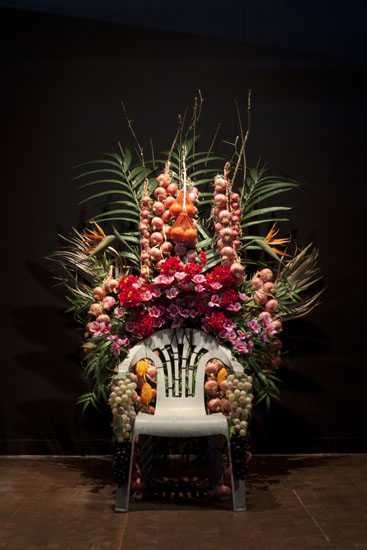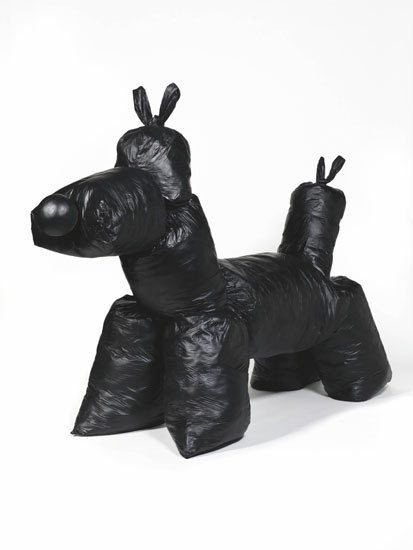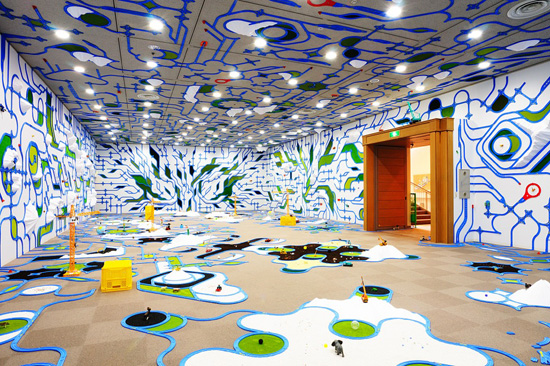Sharne Wolff makes a trek through the sprawling riches of the 7th Asia Pacific Triennial..
The Honourable PJ Keating (Former Prime Minister of Australia) has been in the news this week regarding the 20th anniversary of his now famous ‘Redfern speech’ made in late 1992. Earlier that year, Keating made another significant speech he titled ‘Australia and Asia: Knowing Who We Are’. Amongst other things he said:
Success at home …depends on the individual and collective faith of Australians: It depends on establishing beyond doubt that Asia is where our future substantially lies; that we can and must go there; and that this course we are on is irreversible.
When Keating referred to ‘success’ he wasn’t just referring to the economy. He was speaking about cultural reform and the ‘reform of our outlook’. The first Asia Pacific Triennial (that’s APT1) was held the year after Keating’s speech. APT7 celebrates 20 years of this trailblazing Triennial. The minute you enter APT7 you can almost feel Keating’s ‘can and must go there’ attitude and a sense of Queensland opening its arms to the North. Would we have thought two decades ago that Queensland would lead the way?
Sangdon Kim, Bulwang-dong Totem [blue] 2012 From ‘Bulwang-dong Totem’ series 2012. Giclée prints on premium lustre paper, ed. 2/5, 150 x 100cm (each).
APT7 is held across both sites of QAGOMA. For those unfamiliar with this clunky acronym – it refers to the Queensland Art Gallery (QAG) itself and the [almost adjacent] Gallery of Modern Art (GOMA) – both of which are managed by the same team. This is an enormous exhibition so the most difficult part of writing about it is knowing where, and how, to begin. QAGOMA has proved over its short life that it is exceptionally good at ‘The Blockbuster’ and APT7 is no exception. But how do we contextualise more than 200 works of art produced by 75 senior and emerging artists that traverse 27 different countries – few of which are culturally similar to our own? How do we make sense of art from otherworlds with art histories we don’t share? For APT7 the curatorial team (under Curatorial Manager Russell Storer) has attempted or, perhaps, a better word might be ‘unattempted’ to answer both these questions. What makes this transcultural show fascinating is the way it explores global themes, universality and cultural awareness from individual perspectives.
The show begins with the Pacific in the foyer of the GOMA with the ground floor and atrium dominated by art and architecture from the Abelam and Kwoma people of the East Sepik region of Papua New Guinea. Most spectacular due to their monstrous size are the soaring ephemeral Koromb (spirit house) façade – an example of those used in the villages of this region as places of gathering and community decision making – and the heavily embellished and painted structure constructed by Kwoma Arts. Artwork from this area is the culmination of a three-year collaboration by co-curator Martin Fowler with a team and artists from several villages, many of whom came to Brisbane for several months on a residency. It’s also interesting to see work once considered ‘anthropological’ now being exhibited as art.
GIMHONGSOK, Canine Construction 2009. Resin, 162 x 235 x 88cm.
In some ways not too far from this idea is Michael Cook’s Civilised series of photographs. This series is evidence of Cook’s growing sophistication in the medium of art photography in a career that only began in 2009. Cook’s photographs tread a fine line between commercial and ‘art’ photography as he scrutinises European notions of ‘civilised’. His stylised Aboriginal ‘models’ demonstrate that beauty can be a powerful tool to beget empathy and understanding. From across the ditch in NZ the stylised cross-cultural interiors of Graham Fletcher’s Lounge Room Tribalism series of paintings also consider ideas of post-colonial history.
A compelling multimedia performance by Tadasu Takamine comprises sound, light, relics and memorabilia viewed from a raised platform, mostly in the dark. The artist has sought to fuse the shared experience of tragedy by responding to those devastated by the Japanese tsunami and the Brisbane floods – both of which raised questions about the unrestrained power of government. Set to a female operatic performance this piece explores the loss of language and memories. Memory and passing time are also themes traversed in Yuan Goang Ming’s Disappearing Landscape – Passing II, a video work screened on a huge triple screen that almost physically draws you into its narrative.
Paramodel, paramodelic – graffiti (installation view) 2010. Installation view, Otani Memorial Art Museum, Nishinomiya City, Japan, 2010. Photograph: © Paramodel
On the day of the media preview there was a time I had Parastou Forouhar’s Written Room all to myself. This piece occupies a large room of the Gallery where all the walls and floor are covered in fragmented Farsi script. On tentatively entering [can I step on the art?] the room ‘sings’ as the script waltzes and surrounds you with visual music. A ‘language’ that might in other circumstances be seen as threatening by some is transformed to a heavenly harmony.
Through the door are several monumental paintings by Raqib Shaw that have garnered plenty of attention through their combination of surreal fantasy, kitschy colour and glitzy rhinestones. With numerous images splashed about for media purposes and everything else that’s going on in this show, there are many works taking a quieter role but no less deserving of attention. On the adjacent walls, Vietnamese artist Nguyen Thai Tuan’s ‘Black’ paintings of headless figures remind us that freedom is not enjoyed by all while The Luring of [ ], Phuan Thai Meng’s ripped canvas realism examines the flaws of capitalism and rampant urban growth. The effects of progress are also foreshadowed in Fiona Tan’s film Cloud Island.
There’s truly something for everyone here and apart from anything else – it’s accessible, entertaining and fun. From Uji Handoko Eko Sapturo’s (aka Hahan) colourful sculptures and street-art-style canvases to Gimhongsok’s quirky nod to Jeff Koon’s Puppy entitled Canine Construction. These, together with Tiffany Chung’s thousands-strong herd of hand-blown glass animals, Huang Yong Ping’s huge serpent skeleton (Ressort 2012) commissioned for the QAG’s Watermall and the striking 3D installations by the Japanese artist duo known as Paramodel, mean the kids are going to love it. For every work listed above there’s another seven or eight in the show. The curators must be commended for providing ample space for individual works although to view it all probably requires more than one visit.
APT7 feels more like the future than the past – perhaps The Hon. PJ Keating might be impressed with that. The exhibition illustrates the way Australia grapples with its sense of belonging in the Asia Pacific microworld. The denseness of this show, however, suggests that the question of how we resolve our place has become even more complex. The weaving together of work by so many artists means national borders become blurred and what emerges are our similarities and not our differences. APT7 recommends we turn our gaze both inward and outward. If you’ve never been to QAGOMA then maybe it’s time you went.




Pingback: Inward & Outward: A review of APT7 @QAGOMA « Wolff.